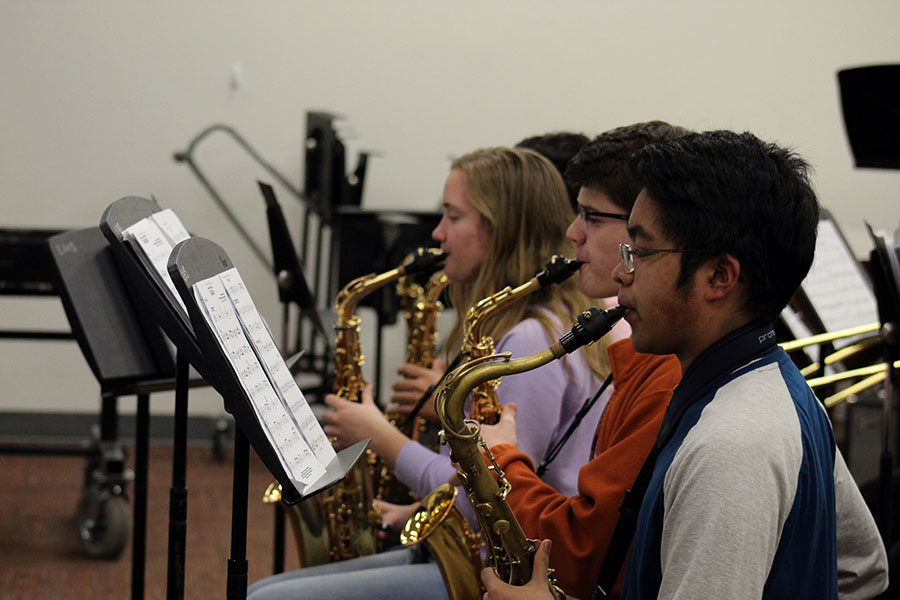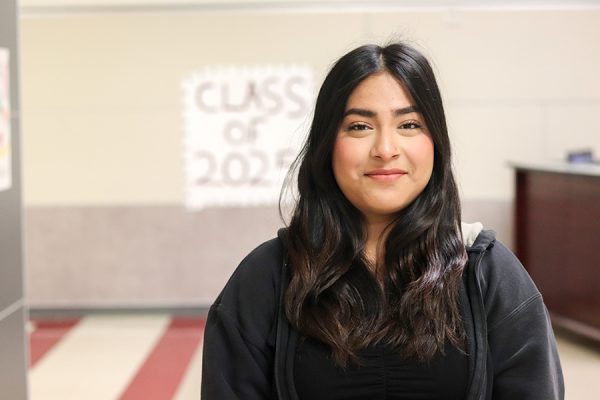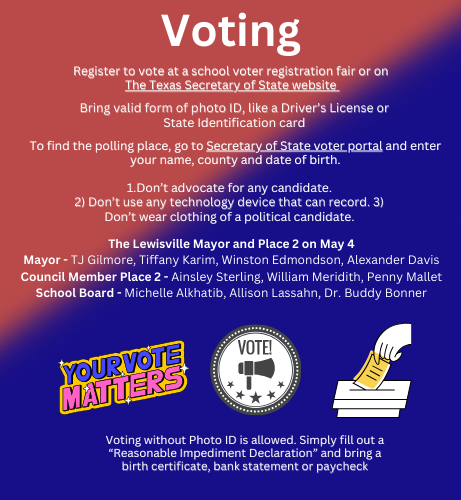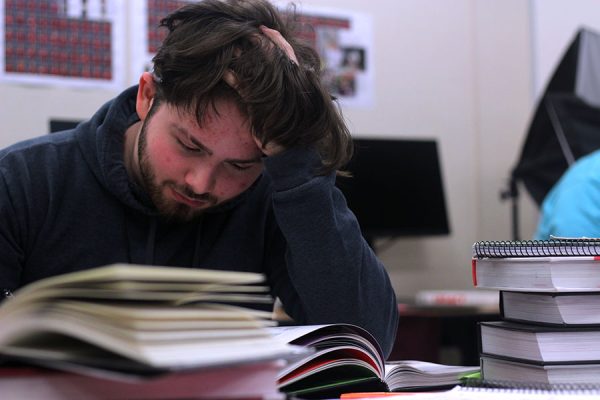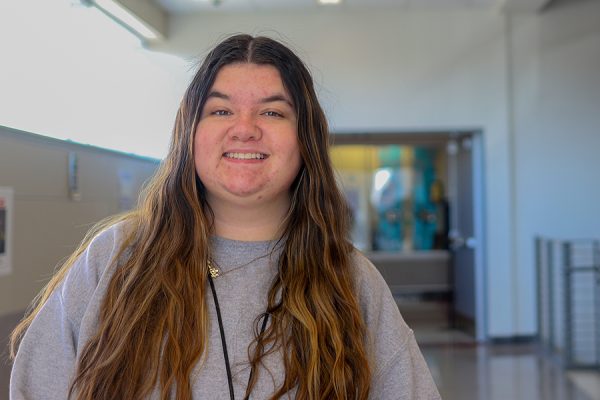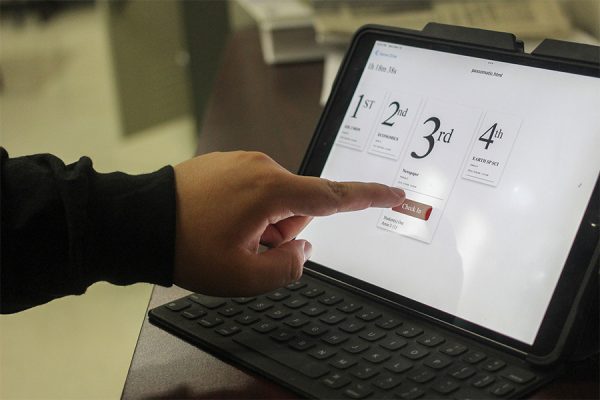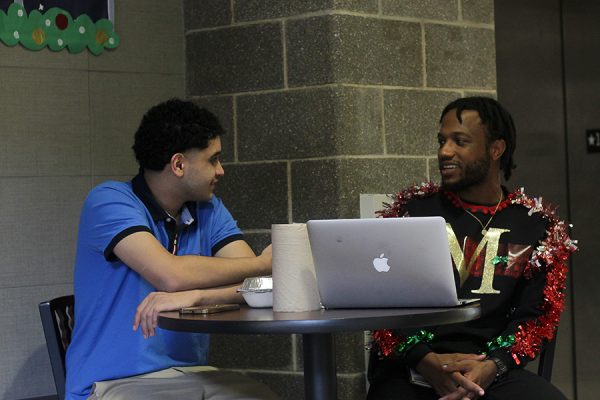Jazzing it up
Band students explore new style of music
The jazz band’s saxophone section rehearses during practice after school on Wednesday, March 6.
A group of 20 students stand together in room D112, instruments in hand and ready to play. A metronome counts out a perfect rhythm. The director gestures toward each section of instruments, signaling for them to play. Sounds of upbeat funk and smooth jazz begin to fill the room, spreading throughout the nearby hallways.
This year, a jazz band was formed due to the high demand from members of the band program. After persistent begging from students and preexisting passion from co-directors David Kraft and Christopher Agwu, the jazz band came to life.
The opportunity to play jazz and be a part of a jazz organization is a unique experience because the music is so fun and energetic.
— band director David Kraft
“Both Mr. Agwu and I are very passionate about jazz,” Kraft said. “I played jazz in high school and I’ve listened to jazz my entire life. Jazz is one of the first things that got me into music. It’s not necessarily just because of the students. It’s kind of a combination of the students and the interest of the directors.”
Sophomore Callie Trankel plays the french horn, though, french horns aren’t a typical jazz instrument, so she doubles playing the trumpet in jazz band. Trankel joined to expand her general knowledge in music. While others have a famous musician who inspires them, Trankel takes inspiration from herself.
“When I see [myself] during performances, [it] inspires me to go even further [with] what I can do,” Trankel said.
Despite the high demand, forming a jazz band has been a complicated process due to scheduling issues and time commitments. However, the students who join are passionate and dedicated enough to give up extra time to play the new style of music.
“It’s been a difficult process to start because of how our schedule works,” Kraft said. “With only a four period day, it’s difficult to have a jazz band during the school day, so it has to be something outside of the school day. With the intensive rehearsals we have in the music programs, it’s been difficult to get things started.”
The only differences between concert band and jazz band is the type of music played and the instruments in the ensemble. Practices are structured similarly to how normal band is but with fewer players.
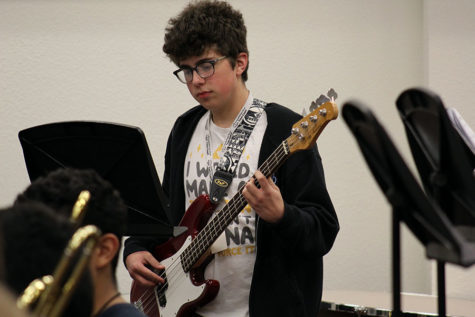
Junior bassist Garrett Hicks plays a funk bass line during jazz band practice after school on Wednesday, March, 6.
“In jazz band, we run rehearsals the same way we would run a regular rehearsal for a concert band, orchestra or choir setting,” Kraft said. “You get to express yourself in a very high energy.”
Although jazz band is an extension of the band program, not all of the instruments can be filled by band members. A typical jazz ensemble includes piano, guitar and a rhythm section, with drums and a bass. Junior Garrett Hicks, who plays bass, is the only current member of jazz band who doesn’t play in concert band.
“It took a little bit for me to get used to the music and the new environment, since I’m the only non-band person in there,” Hicks said.
Having a jazz band in addition to the regular band program allows extra opportunities for students to perform. The jazz band is also a smaller setting, so band members can receive direct help from the directors.
“Jazz band is another opportunity to perform music and any opportunity a student has to perform music is a good one,” Kraft said. “Jazz is a true American music genre. The opportunity to play jazz and be a part of a jazz organization is a unique experience because the music is so fun and energetic.”



